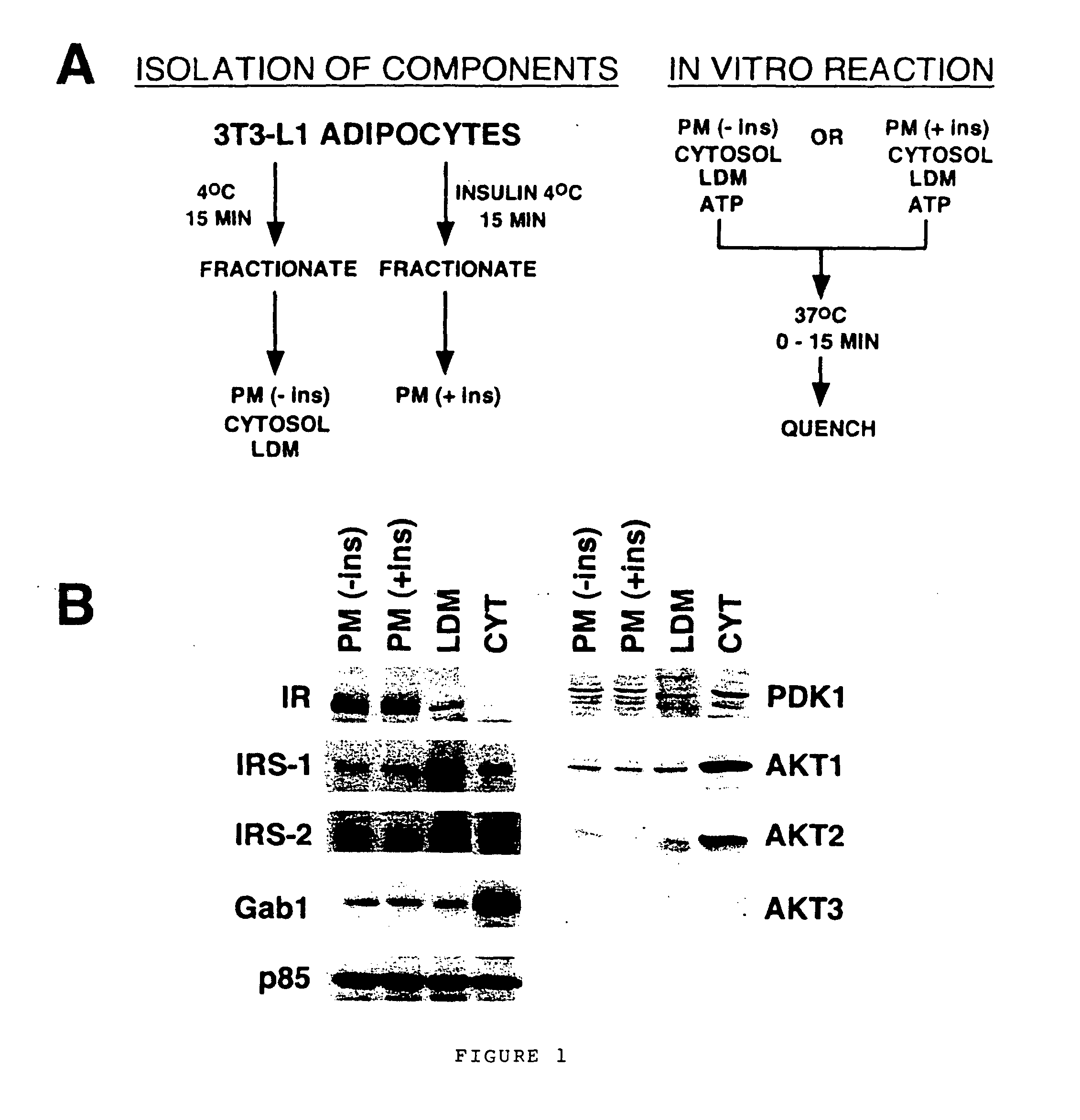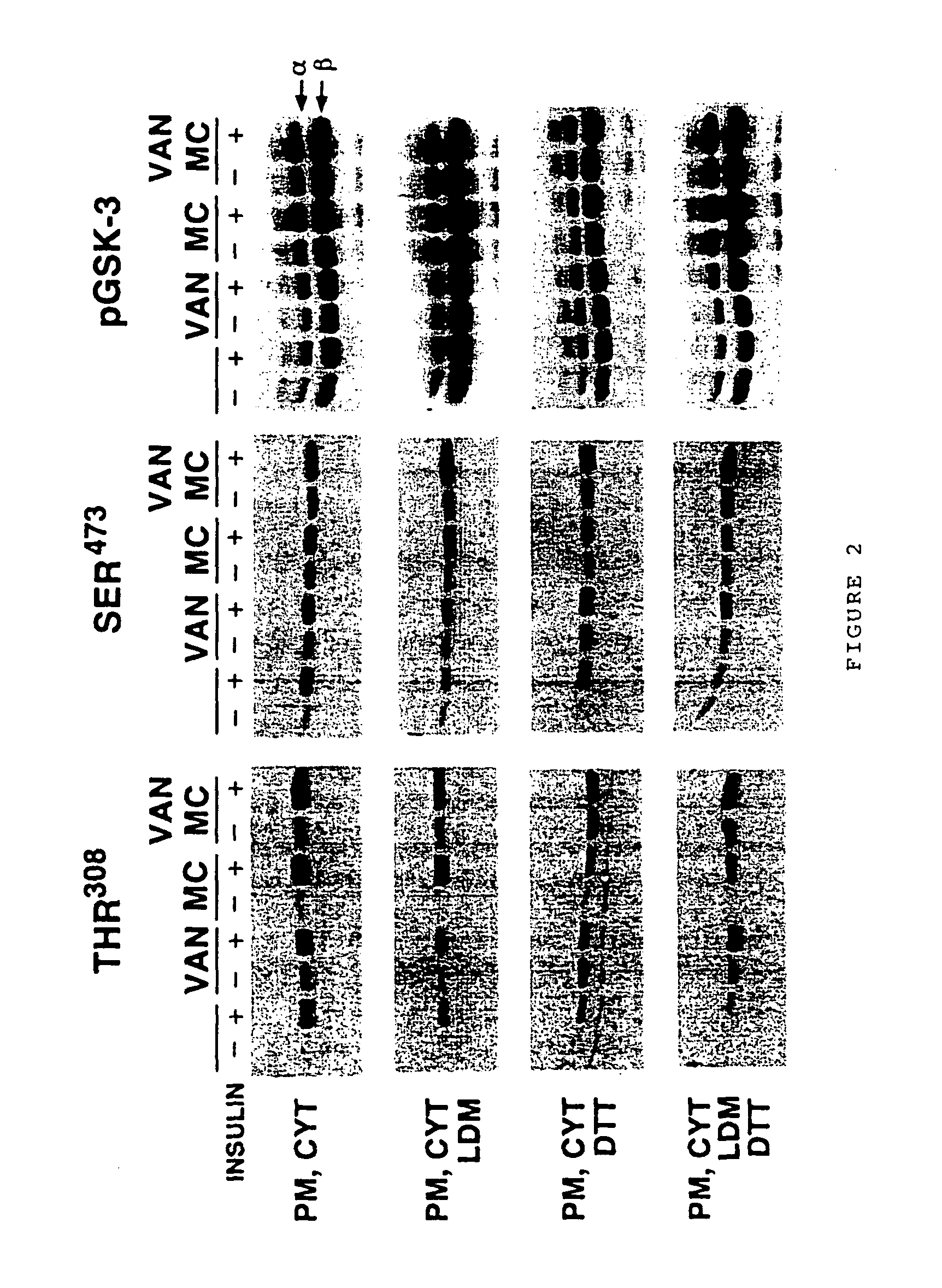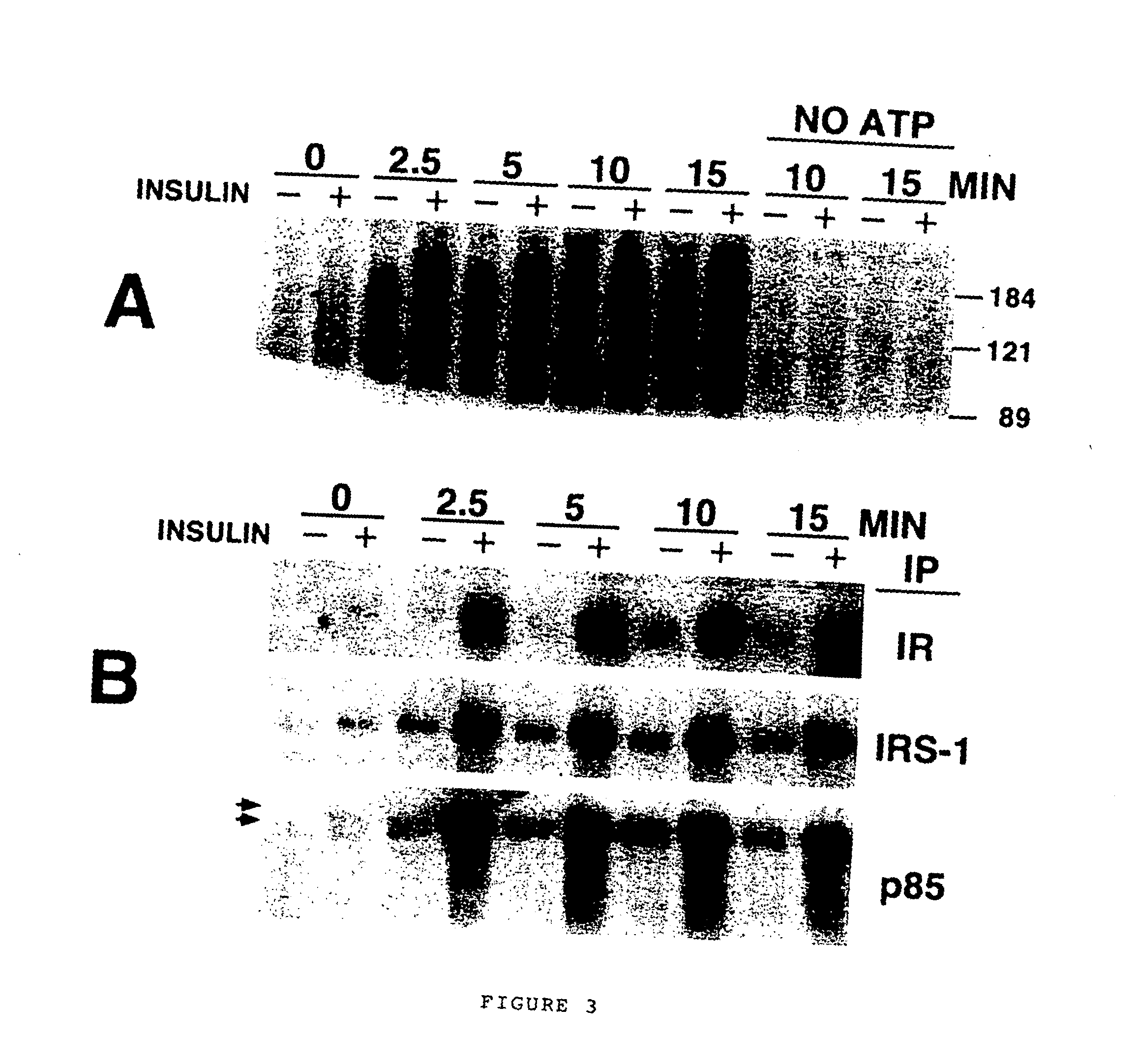Cell-free assay for insulin signaling
a cell-free assay and insulin technology, applied in the field of cell-free assay for insulin signaling, can solve the problems of major unresolved problems such as the search for the elusive pdk2 and the potential limitation of the extent of manipulations that can be performed in the assay, and achieve the effect of reducing the risk of pdk2 detection
- Summary
- Abstract
- Description
- Claims
- Application Information
AI Technical Summary
Benefits of technology
Problems solved by technology
Method used
Image
Examples
example 1
Characterization of the Cell-Free Assay System (“Assay Mixture”)
[0105] Key aspects of the insulin-signaling pathway have been reconstituted using subcellular fractions of 3T3-L1 adipocytes, the “assay mixture”. Adipocytes typically exhibit a ˜10-20 fold increase in glucose uptake in response to acute stimulation with insulin (Calderhead, 1990). The capacity to respond to this extent is acquired during the course of adipocyte differentiation, during which the expression levels of signaling components (such as the insulin receptor and IRS-1) (Reed, 1977; Rice, 1992; Rubin, 1977) and effector molecules (such as the insulin-responsive glucose transporter Glut4) (James, 1989; Tordjman, 1989) are dramatically induced. Extensively characterized subcellular fractionation protocols exist for adipocytes, allowing the reproducible recovery of distinct subcellular components with relative ease (Jarett, 1974; Piper, 1991; Simpson, 1983). The premise of the basic in vitro assay is diagrammed in ...
example 2
In Vitro Phosphorylation of Ser473 of Protein Kinase B (Akt)
[0116] The preceding data demonstrated that early insulin signaling events dependent on PI-3 kinase, up to and including Akt and GSK-3 phosphorylation, appeared to be faithfully reconstituted with reasonable efficiency in our in vitro system. We utilized our system to investigate the molecular regulation of Akt, taking advantage of experimental manipulations made possible by unhindered access to all reaction components. One outstanding issue with regard to Akt regulation concerns the nature of the kinase activity, tentatively termed PDK2, responsible for phosphorylating Akt on Ser473 in the hydrophobic carboxy-terminal domain. At least three models for Ser473 phosphorylation have been proposed. Alessi and co-workers demonstrated that PDK1 could be converted in vitro, through interaction with a hydrophobic peptide (called PDK1-interacting peptide or PIF), into a form capable of phosphorylating Akt on both Thr308 and Ser473 ...
PUM
| Property | Measurement | Unit |
|---|---|---|
| pH | aaaaa | aaaaa |
| volumes | aaaaa | aaaaa |
| concentrations | aaaaa | aaaaa |
Abstract
Description
Claims
Application Information
 Login to View More
Login to View More - R&D
- Intellectual Property
- Life Sciences
- Materials
- Tech Scout
- Unparalleled Data Quality
- Higher Quality Content
- 60% Fewer Hallucinations
Browse by: Latest US Patents, China's latest patents, Technical Efficacy Thesaurus, Application Domain, Technology Topic, Popular Technical Reports.
© 2025 PatSnap. All rights reserved.Legal|Privacy policy|Modern Slavery Act Transparency Statement|Sitemap|About US| Contact US: help@patsnap.com



